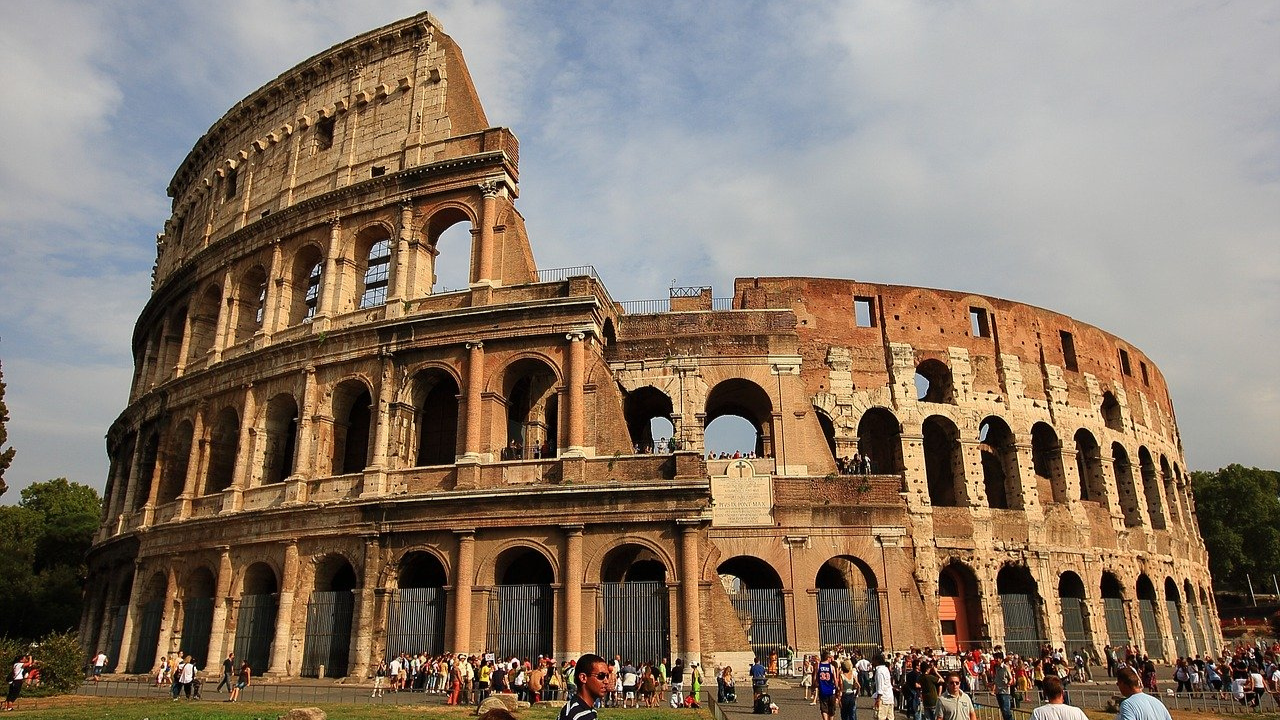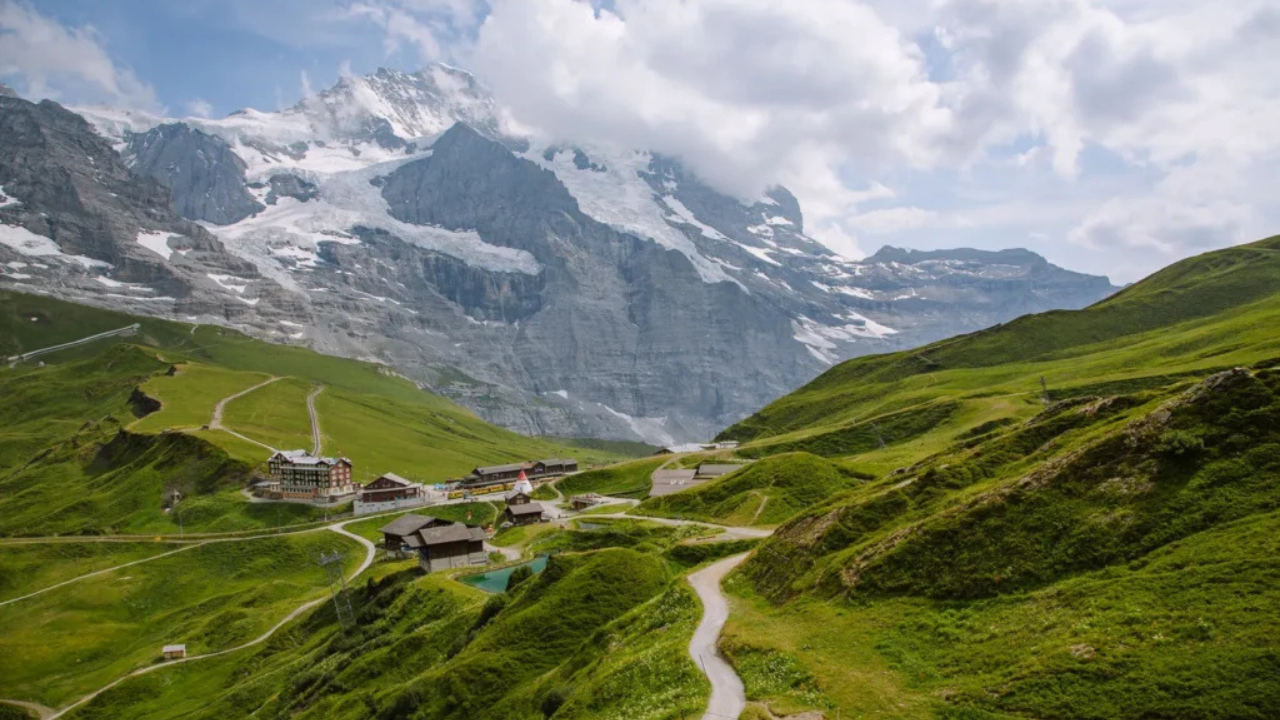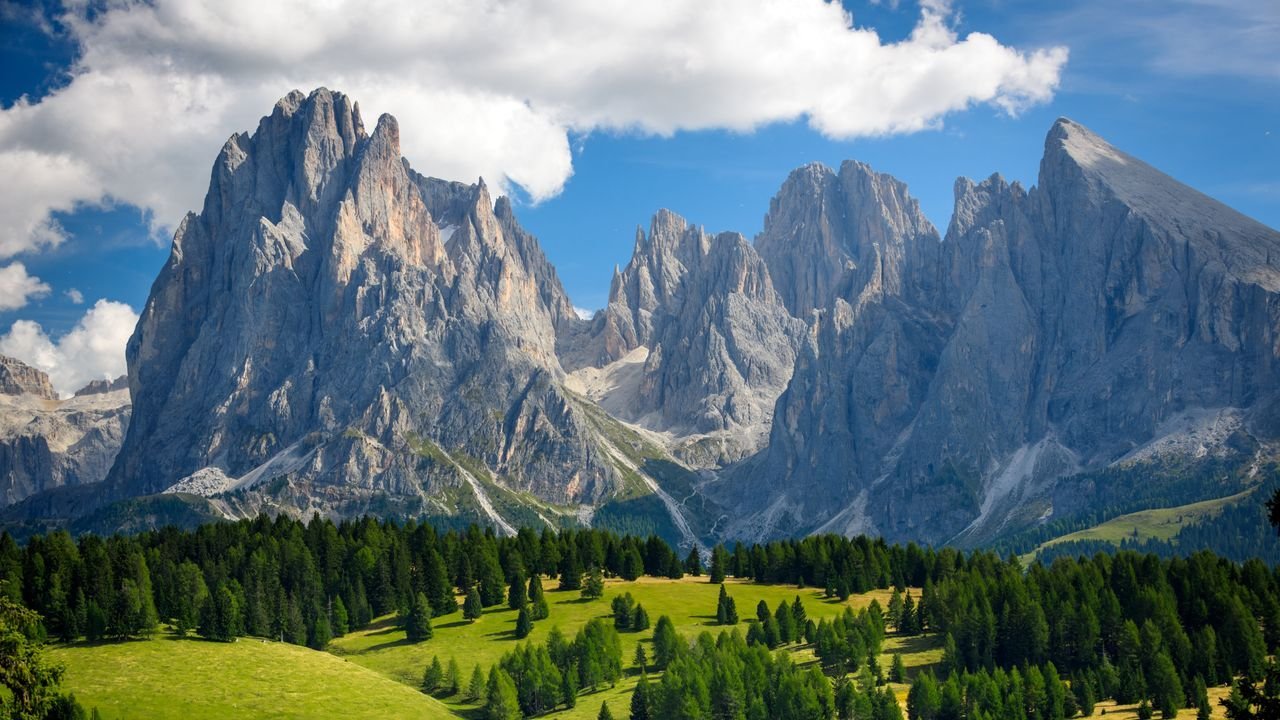Introduction: Rome in Three Days
Rome, the Eternal City, is a living museum where ancient ruins, Renaissance art, and vibrant street life converge. Home to 2.8 million residents and attracting over 10 million visitors annually, Rome weaves 3,000 years of history into every cobblestone street. From the Colosseum’s gladiatorial echoes to the Sistine Chapel’s divine frescoes, the city overwhelms with iconic landmarks. Yet, in just three days, you can experience its essence—balancing must-see sights with authentic Roman moments like sipping espresso in a piazza or savoring carbonara in Trastevere. This meticulously crafted 3-day itinerary, complete with a map and practical tips, ensures you capture Rome’s magic efficiently and memorably.
In 2025, Rome thrives as a global tourism hub, blending timeless charm with modern accessibility. Enhanced metro lines and sustainable initiatives make exploring easier than ever. Ideal for spring visits (April–May) to enjoy mild weather (15–25°C) and fewer crowds, this itinerary uses Rome’s compact historic center, walkable neighborhoods, and affordable public transport to maximize your time. Whether you’re a history buff, foodie, or first-time visitor, this plan delivers Rome’s heart and soul. Let’s dive into the perfect 3-day adventure.
Why Rome for 3 Days?
Rome’s compact core and layered history make it ideal for a short trip:
- Iconic Landmarks: The Colosseum, Pantheon, and Vatican are UNESCO treasures within a 2-mile radius.
- Culinary Delights: From gelato to cacio e pepe, Rome’s food is a cultural cornerstone.
- Walkable Charm: Most sights are reachable on foot, with metro and buses for longer hops.
- Cultural Depth: Ancient, medieval, and Baroque art coexist in vibrant piazzas.
- Affordability: Budget-friendly eats and free sights balance pricier attractions.
This itinerary assumes you’re staying centrally (near Termini, Campo de’ Fiori, or Monti) for easy access to sights and metro stops. Daily costs average €80–150, excluding accommodation.
Day 1: Ancient Rome and Historic Heart
Morning: Colosseum and Roman Forum
Start with Rome’s ancient core, where gladiators once battled and emperors ruled.
- Colosseum (8:30 AM–11:00 AM): Begin at the world’s largest amphitheater, a 2,000-year-old marvel. Book a skip-the-line ticket with arena floor access (€24, www.coopculture.it) to avoid queues and explore the underground chambers. Allow 1.5–2 hours for the iconic arches and history. Audio guides (€6) add context.
- Roman Forum and Palatine Hill (11:15 AM–1:15 PM): A 5-minute walk uphill, the Forum was ancient Rome’s political heart. Wander among temples, basilicas, and the Arch of Titus, then climb Palatine Hill for city views and imperial palace ruins. Entry is included with Colosseum tickets (€24 combined). Spend 2 hours; rent headsets (€5) for insights.
Tip: Book Colosseum tickets 1–2 months ahead, selecting early slots (8:30 AM) to beat crowds. Wear comfy shoes for uneven terrain.
- Lunch at Trattoria Luzzi (1:30 PM–2:30 PM): Walk 10 minutes to this Monti gem for Roman classics like pizza romana or amatriciana (€8–15). Outdoor tables offer Colosseum views. Cash preferred.
Afternoon: Capitoline Hill and Pantheon
Explore Rome’s historic center, blending ancient and Renaissance treasures.
- Capitoline Hill (2:45 PM–3:45 PM): A 10-minute walk, this hill hosts the Capitoline Museums (€15, optional) and Piazza del Campidoglio, designed by Michelangelo. Enjoy free Forum views from the Tabularium terrace. Spend 1 hour.
- Pantheon (4:00 PM–5:00 PM): Walk 10 minutes to this 2nd-century temple, famed for its oculus and perfect dome. Entry is free (reservations required weekends, www.pantheonroma.com). Marvel at Raphael’s tomb and the engineering feat. Allow 45 minutes.
- Piazza Navona (5:15 PM–6:00 PM): Stroll 5 minutes to this Baroque square with Bernini’s Fountain of the Four Rivers. Watch street artists and soak in the vibe. Free to visit.
Tip: Download the Pantheon audio guide (free) for history. Carry a scarf to cover shoulders at religious sites.
Evening: Trevi Fountain and Dinner
End with Rome’s romantic side and a hearty meal.
- Trevi Fountain (6:15 PM–7:00 PM): Walk 10 minutes to toss a coin (€0.50) into this iconic fountain, ensuring your return to Rome. Arrive before dusk to avoid peak crowds. Free, 45 minutes.
- Dinner at Roscioli Salumeria (7:30 PM–9:30 PM): A 15-minute walk to Campo de’ Fiori, this legendary spot serves carbonara and cacio e pepe (€12–20). Book via www.salumeriaroscioli.com. Savor house wine and tiramisu. Cash or card accepted.
Tip: Photograph Trevi from the side to avoid selfie-stick chaos. Reserve Roscioli 2 weeks ahead.
Day 1 Summary: You’ve conquered Ancient Rome, marveled at architectural gems, and tasted classic dishes. Cost: ~€70–100 (tickets, meals, transport). Walked: ~3 miles.
Day 2: Vatican City and Trastevere
Morning: Vatican Museums and St. Peter’s
Dive into the world’s smallest state, packed with art and spirituality.
- Vatican Museums (8:00 AM–11:30 AM): Start early with skip-the-line tickets (€20–30, www.museivaticani.va) to see the Sistine Chapel’s Michelangelo frescoes, Raphael Rooms, and Map Gallery. Allow 3 hours to navigate crowds and 53 galleries. Audio guides (€8) enhance the experience. Metro Line A (Ottaviano) from Termini (~€1.50, 10 minutes).
- St. Peter’s Basilica (11:45 AM–1:15 PM): A 5-minute walk, this Renaissance masterpiece is free to enter (dress code: covered knees/shoulders). Climb the dome (€10 with lift, €8 stairs) for panoramic views. Spend 1.5 hours admiring Bernini’s baldacchino and Michelangelo’s Pietà.
Tip: Book Vatican tickets 60 days out for 8 AM slots. Avoid Wednesdays (Papal Audience crowds). Bring a water bottle; refills are available.
- Lunch at Amalfi in Vaticano (1:30 PM–2:30 PM): Walk 5 minutes for pizza or seafood pasta (€10–18) near the Vatican walls. Outdoor seating is lively. Card accepted.
Afternoon: Castel Sant’Angelo and Campo de’ Fiori
Explore Rome’s medieval and market vibes.
- Castel Sant’Angelo (2:45 PM–4:15 PM): Walk 15 minutes along the Tiber to this 2nd-century fortress-turned-museum (€15, www.castelsantangelo.beniculturali.it). Explore Hadrian’s tomb and papal apartments, with rooftop views. Spend 1.5 hours.
- Campo de’ Fiori (4:45 PM–5:45 PM): Walk 15 minutes to this bustling square hosting a daily market (8 AM–2 PM). Browse flowers, cheeses, and souvenirs (€5–20). Free to wander; enjoy street musicians.
Tip: Skip Castel Sant’Angelo’s audio guide (€5) if time’s tight—signage is sufficient. Photograph Ponte Sant’Angelo’s angel statues.
Evening: Trastevere Dinner and Nightlife
Savor Rome’s bohemian soul.
- Trastevere (6:15 PM–9:30 PM): Walk 10 minutes to this charming district. Stroll Piazza Santa Maria, visit Santa Maria in Trastevere church (free), and dine at Osteria da Zi Umberto for supplì and saltimbocca (€10–20, reserve via www.ziumberto.it). Post-dinner, sip cocktails at Freni e Frizioni (
€8–12) or gelato at Gelateria del Viale (€3). - Return: Taxi (~€10) or bus (#23, ~€1.50) to your hotel.
Tip: Trastevere gets crowded—book dinner by 5 PM. Try nocciola gelato for a local favorite.
Day 2 Summary: You’ve explored Vatican treasures, medieval history, and Trastevere’s charm. Cost: ~€70–110. Walked: ~4 miles.
Day 3: Villa Borghese, Spanish Steps, and Foodie Finale
Morning: Villa Borghese and Galleria Borghese
Enjoy Rome’s green heart and Renaissance art.
- Villa Borghese Gardens (8:30 AM–10:00 AM): Take metro Line A to Flaminio (~€1.50) and walk 5 minutes to these sprawling gardens. Rent a bike (€5/hour) or stroll past fountains and Pincio Terrace for skyline views. Free entry, 1.5 hours.
- Galleria Borghese (10:30 AM–12:30 PM): Book timed tickets (€15, www.galleriaborghese.beniculturali.it) for Bernini’s sculptures (Apollo and Daphne) and Caravaggio paintings. Allow 2 hours; bags must be checked. Audio guides (€5) recommended.
Tip: Reserve Galleria tickets 1 month ahead—slots sell out. Wear sneakers for garden paths.
- Lunch at Babalù (12:45 PM–1:45 PM): Walk 10 minutes to this casual spot for gourmet sandwiches or salads (€8–15). Gluten-free options available. Card accepted.
Afternoon: Spanish Steps and Piazza del Popolo
Hit Rome’s elegant landmarks.
- Spanish Steps (2:00 PM–3:00 PM): Walk 10 minutes to this 135-step Baroque icon. Climb to Trinità dei Monti church for views (free). Browse Via Condotti’s luxury shops (Gucci, Prada). Spend 1 hour.
- Piazza del Popolo (3:15 PM–4:15 PM): Walk 10 minutes to this grand square with an Egyptian obelisk and Santa Maria del Popolo church (free, Caravaggio artworks). Relax by the fountain or watch street performers.
Tip: Spanish Steps are crowded—visit early afternoon. Avoid eating on the steps (fines apply).
Evening: Food Tour and Farewell
End with Rome’s culinary soul.
- Monti Food Tour (5:00 PM–8:00 PM): Join a guided walking tour with Eating Europe or Secret Food Tours (~€80, book via www.eatingeurope.com). Sample pizza al taglio, porchetta, and gelato across 5–7 stops in Monti’s hip lanes. Learn about Roman food culture while sipping local wine. 3 hours.
- Alternative: Dine at Checchino dal 1887 in Testaccio for tripe or rigatoni con pajata (€15–25, www.checchino-dal-1887.com). Pair with Lazio wine.
- Nightcap at Piazza Venezia (8:30 PM–9:30 PM): Walk or taxi (
€8) to see the illuminated Altare della Patria. Reflect on your Roman adventure with a final espresso (€2) at a nearby café.
Tip: Book food tours 2 weeks ahead. Wear stretchy pants for generous portions!
Day 3 Summary: You’ve savored art, elegant squares, and Rome’s flavors. Cost: ~€90–130. Walked: ~3.5 miles.
Interactive Map for Your Rome Adventure
Access this Google Maps link: Rome 3-Day Itinerary Map. (Note: Replace with your custom map link when sharing.)
- Features: Pins for all sights, restaurants, and metro stops, with walking routes and notes.
- Tip: Save to your Google account and download offline via Google Maps or Roma Pass app.
Practical Tips for Visiting Rome
- Transport: Use metro Lines A/B (€1.50/ride, €7/day pass), buses, or taxis (~€8–15). Walk historic center (most sights <1 mile apart). Buy tickets at stations or via ATAC Roma app.
- Budget:
€80–150/day (tickets, meals, transport). Save with street pizza (€5) and free sights (Pantheon, piazzas). Roma Pass (€52, 72 hours) covers Colosseum, Galleria Borghese, and transport. - Accommodation: Stay in Monti (Hotel Grifo, ~€100/night), Campo de’ Fiori (Hotel Smeraldo, ~€120), or Termini (The Hive, ~€90) for metro/walking access. Book 3–6 months ahead.
- Packing: Comfy shoes for cobblestones, scarf for churches, light layers (spring temps 15–25°C), reusable water bottle (free fountains, nasoni).
- Safety: Rome is safe, but watch for pickpockets at Termini and Colosseum. Use crossbody bags and avoid unofficial guides.
- Etiquette: Dress modestly for churches, tip ~5% at restaurants (if service isn’t included), say “buongiorno” to locals. No eating on monuments.
- Connectivity: Free Wi-Fi at major sites (register via Roma WiFi). Buy a TIM/Vodafone SIM (~€20, 10GB) at tobacco shops.
- Language: English is common in tourist areas. Learn “grazie” (thank you) and “per favore” (please) for politeness.
Why This Itinerary Works
This 3-day plan optimizes Rome’s highlights:
- Day 1: Covers Ancient Rome (Colosseum, Forum) and historic gems (Pantheon, Trevi), grounding you in the city’s roots.
- Day 2: Explores Vatican City’s art and Trastevere’s soul, balancing grandeur with local life.
- Day 3: Blends leisurely gardens, elegant squares, and a food tour for a cultural finale.
It minimizes backtracking—Day 1 stays in Rione Monti/Campitelli, Day 2 focuses on Vatican/Prati, Day 3 circles Borghese/Salario—using metro for longer hops. The pace allows downtime (piazza breaks, gelato stops) while hitting 12+ major sights. Costs balance splurges (Vatican, food tour) with freebies (Pantheon, piazzas).
Rome in 2025: A Vibrant Destination
Rome thrives in 2025, with metro Line C expanding (San Giovanni–Colosseo link) and Jubilee Year events boosting religious tourism. Posts on platforms like X highlight Colosseum sunsets and Trastevere’s charm, while sustainable efforts (e-bike rentals, plastic-free fountains) align with eco-conscious travel. The city’s 3,000th anniversary looms, fueling excitement for its timeless appeal.
Challenges and Solutions
- Crowds: Colosseum and Vatican are packed. Book early tickets and visit at opening (8–9 AM). Shoulder seasons (April, October) are quieter.
- Heat: Spring is mild, but carry water and shade hats. Schedule indoor sights (museums) for midday.
- Queues: Skip lines with pre-booked tickets. Avoid free first Sundays—museums are mobbed.
- Scams: Ignore touts selling bracelets or “free” tours. Use official sites (coopculture.it, museivaticani.va) for tickets.
- Navigation: Rome’s alleys confuse. Use Google Maps offline or buy a pocket map (~€5).
Conclusion: Your Roman Holiday Awaits
Three days in Rome is a whirlwind of ancient glory, divine art, and soulful flavors. From the Colosseum’s roar to Trastevere’s cobblestone charm, this itinerary captures the Eternal City’s heart—efficiently, authentically, and memorably. Walk in emperors’ footsteps, pray under Michelangelo’s frescoes, and toast with vino as the sun sets over Piazza Venezia. Plan smart—book tickets early, wear comfy shoes, and savor every gelato lick.
Start your journey at www.romepass.it or www.turismoroma.it, save the map, and let Rome’s timeless magic unfold. Buon viaggio—your Roman adventure begins now.




